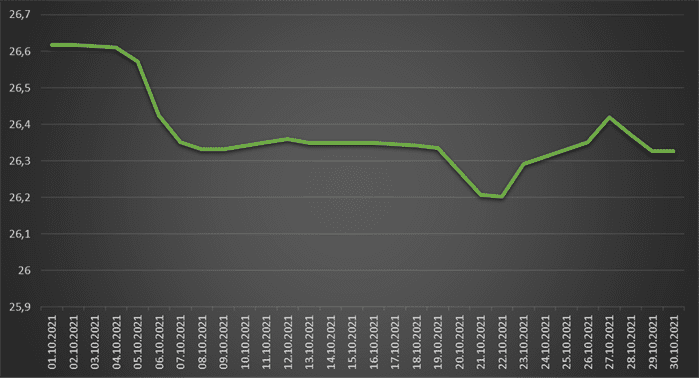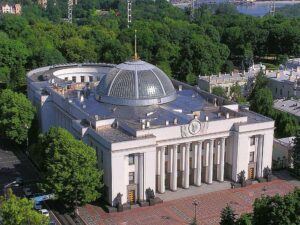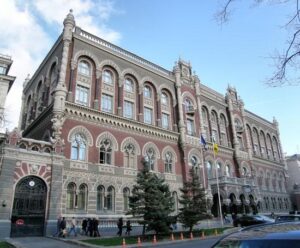Quotes of interbank currency market of Ukraine (UAH for $1, in 01.10.2021-39.10.2021)


The Verkhovna Rada plans to launch a nationwide targeted social program to provide Ukrainians with water through the development and reconstruction in 2022-2026 of centralized water supply and drainage systems in settlements throughout Ukraine, its total cost is estimated at UAH 57 billion. Corresponding bill No. 5723 on the nationwide target social program “Drinking Water of Ukraine” for 2022-2026 at first reading at a parliamentary meeting on Thursday was supported by 328 MPs with the required 226 votes.The existing issue of providing the inhabitants of Ukraine with high-quality drinking water is planned to be resolved through the construction, reconstruction or overhaul of water intake, water supply and treatment facilities, water supply networks and drainage systems, the construction and installation of post-treatment stations for drinking water, the creation of laboratories for monitoring the quality of drinking water and waste water.According to the annex to the document, in the territory of the country in 2022-2026 it is planned to build or reconstruct 290 water intake buildings, 280 water supply and treatment facilities, 79 post-treatment plants for drinking water, 1,100 water supply and drainage networks, as well as launch five water quality control laboratories.Financing of the program is planned from the state budget of Ukraine, including the state fund for regional development, the state fund for the development of water management and subventions for the implementation of investment projects, local budget funds, the funds of water supply and drainage enterprises, external and internal borrowings, grants from international organizations, funds from international programs, charitable contributions.”The approximate amount of funding for the program is UAH 28.59 billion, of which from the state budget – UAH 16.95 billion, from the local budget and other sources – UAH 11.64 billion. The volume of expenses required for the implementation of the program is determined annually, taking into account the possibilities of the state and local budgets in the formation of their indicators,” the appendix to the draft law reads.According to an explanatory note to the document, the implementation of the water supply program will allow consumers to receive high-quality services of centralized drainage and wastewater treatment, and industry enterprises providing services for centralized water supply and centralized drainage will receive an increase in profits from their activities.

The number of citizens’ complaints to the National Bank of Ukraine (NBU) in July-September 2021 amounted to 29,000, which is 13.7% more than in the previous quarter (25,500), according to a report on work with complaints from consumers of financial services, published on the regulator’s website on Wednesday. At the same time, number of written complaints in the third quarter increased by 18%, to 11,340, and the number of calls to the call center – by 10%, to 17,400.Most of the complaints from consumers relate to the work of nonbank financial institutions: 8,720 written complaints and 5,750 calls to the call center.One of the main reasons for the growth in the number of applications is Law No. 1349-IX on the regulation of collection activities, which came into full force on July 14, 2021.“It clearly outlined the rights of consumers of financial services and bans on the work of debt collectors. That is why citizens began to complain more often to the National Bank about the violation by debt collectors and lenders when settling overdue debts,” the central bank said.According to the report, debt management and unethical behavior of debt collectors and credit institutions is the most common topic of both written complaints (47% of the total) and calls to the call center (19%).In addition, in their written requests, consumers asked questions about loans from nonbank financial institutions (23%), relations on compulsory types of insurance (8%), bank loans (7%).At the same time, the topical topics of calls to the call center were loans from nonbank financial institutions (14%), issues of banknotes and coins (11%), relations under bank loan agreements (7%).According to the NBU, 45% of written requests had signs of violation of the rights of consumers of financial services.Among the problematic issues in the work of nonbank financial institutions is the accrual of interest over the loan period, fraud using lost consumer documents, problematic issues with insurance companies, tough methods of collecting bad debts.Among the problematic issues identified in the work of banks are also cases of fraud with customer accounts, the imposition of additional services, tough actions to collect bad debts.

Head of the State Property Fund (SPF) of Ukraine Dmytro Sennychenko announced his resignation of his own free will.“Resignation is my personal desire and my plans,” he said at a press conference in Kyiv on Thursday.Sennychenko said that he originally planned to work in this position for about two years. According to him, he managed to achieve the main tasks set, namely to ensure the stability of the processes in the fund, to create a team, to digitalize the processes and to consolidate the improvements in laws and regulations.The SPF head said the decision to resign was not connected with the auction for the sale of Bilshovyk.Sennychenko said that after submitting the application, he had already had a meeting with the president and prime minister. According to him, his application has already been registered in the Verkhovna Rada.The SPF head said that after his resignation he intends to rest for at least two months.

State-owned Ukreximbank (Kyiv) has expanded the list of securities for investment, and offers its clients corporate eurobonds placed on international stock markets and admitted to circulation on Ukrainian stock exchanges.According to the financial institution, in addition to sovereign eurobonds at the request of clients, Ukreximbank carries out operations with eurobonds of Ukrainian companies Naftogaz Ukrainy, Metinvest, Kernel Holding, MHP SE, and DTEK Renewables.In addition, clients can purchase eurobonds of Ukrainian Railway (Ukrzaliznytsia), Vodafone Ukraine, Ukravtodor, Oschadbank, Ukreximbank. In the future, the bank plans to expand the list of investment services and provide access to trading in shares of foreign companies, the press release says.“Among the first transactions, a significant one is the acquisition by our client […] of corporate eurobonds of Ukreximbank. We value the trust of our clients and are glad that now, among the instruments for placing funds, we can offer, among other things, investments in debt instruments of international capital markets,” member of the bank’s board Mykhailo Medko said.Ukreximbank was founded in 1992, its sole owner is the state. According to the National Bank of Ukraine, as of September 1, 2021, Ukreximbank ranked third in terms of total assets (UAH 241.973 billion) among 72 banks operating in the country.
Average monthly wage by region in Sept 2021, UAH
